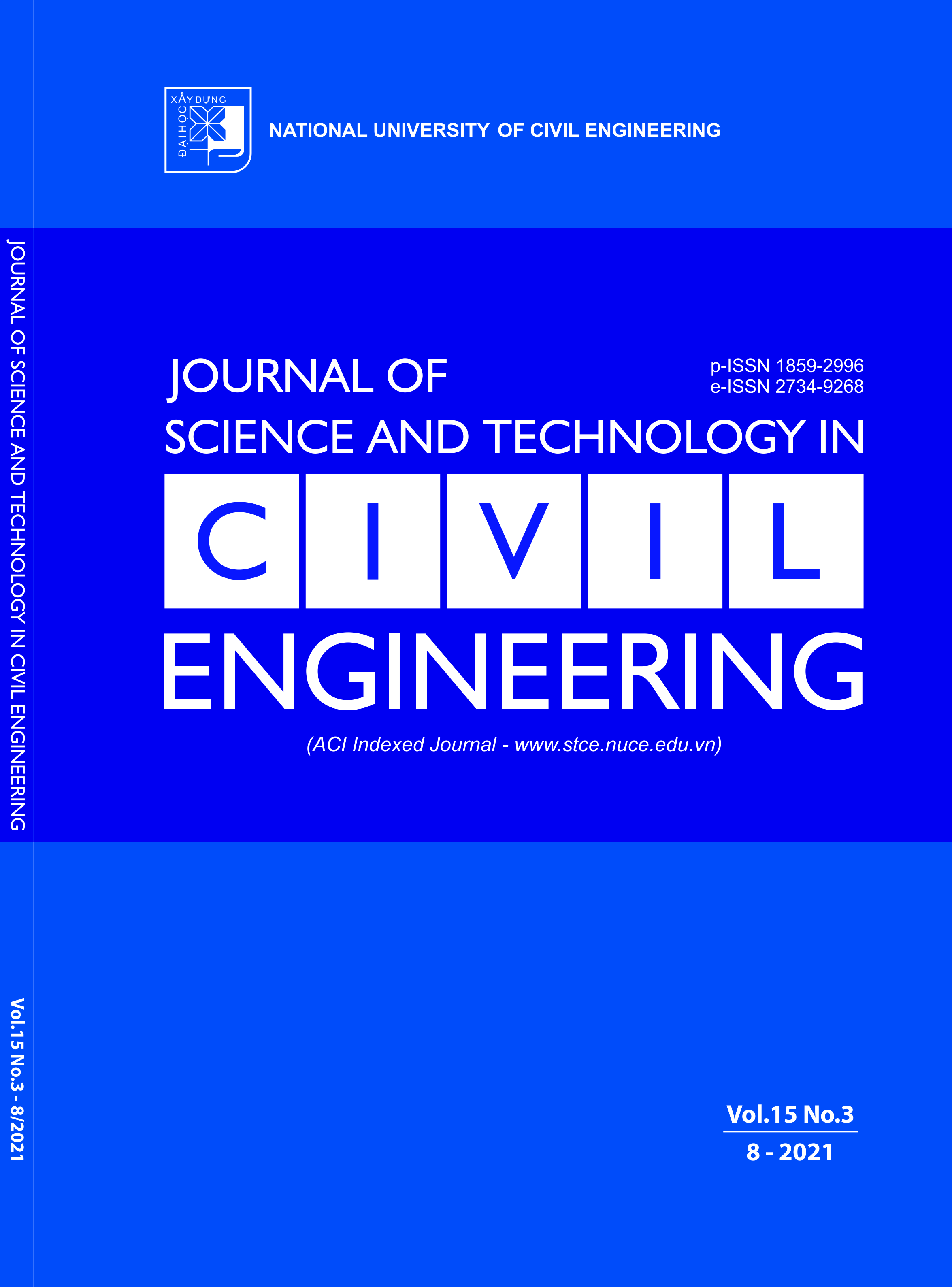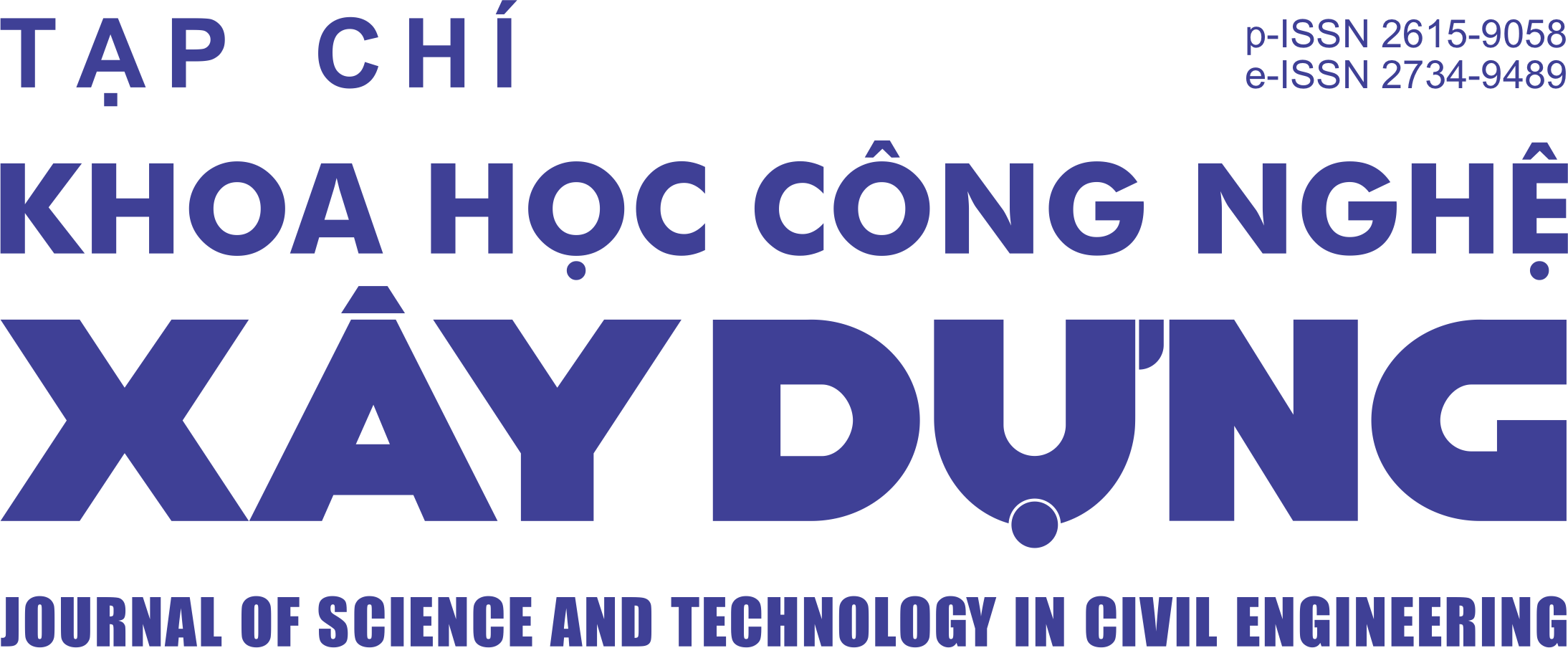Evaluation of punching shear capacity of two-way RC slabs without transverse reinforcement according to different provisions
Abstract
Currently, RC flat slabs are being used commonly because of their advantages. Punching shear failure is one of the governing failure modes of RC flat slabs without column capital and drop panels. In this paper, the provisions for predicting the punching shear capacity of two-way reinforced concrete (RC) flat slabs without shear reinforcement including ACI 318-19, Eurocode 2 and TCVN 5574:2018 provisions are reviewed by mean of considering the influences of the main parameters (effective depth, compressive strength of concrete, loaded area, reinforcement ratio). A total of 169 test results collected from the literature were used to compare with the provisions. The aim of this study was to evaluate the level of applicability of predicting the punching shear capacity of two-way RC flat slabs according to these provisions. The comparison results indicated that the Eurocode 2 provision provides the most accurate prediction of punching shear capacity of two-way RC flat slabs.
Downloads
Copyright (c) 2021 National University of Civil Engineering

This work is licensed under a Creative Commons Attribution-NonCommercial-NoDerivatives 4.0 International License.
1. The Author assigns all copyright in and to the article (the Work) to the Journal of Science and Technology in Civil Engineering (JSTCE) – Hanoi University of Civil Engineering (HUCE), including the right to publish, republish, transmit, sell and distribute the Work in whole or in part in electronic and print editions of the Journal, in all media of expression now known or later developed.
2. By this assignment of copyright to the JSTCE, reproduction, posting, transmission, distribution or other use of the Work in whole or in part in any medium by the Author requires a full citation to the Journal, suitable in form and content as follows: title of article, authors’ names, journal title, volume, issue, year, copyright owner as specified in the Journal, DOI number. Links to the final article published on the website of the Journal are encouraged.
3. The Author and the company/employer agree that any and all copies of the final published version of the Work or any part thereof distributed or posted by them in print or electronic format as permitted herein will include the notice of copyright as stipulated in the Journal and a full citation to the Journal as published on the website.







